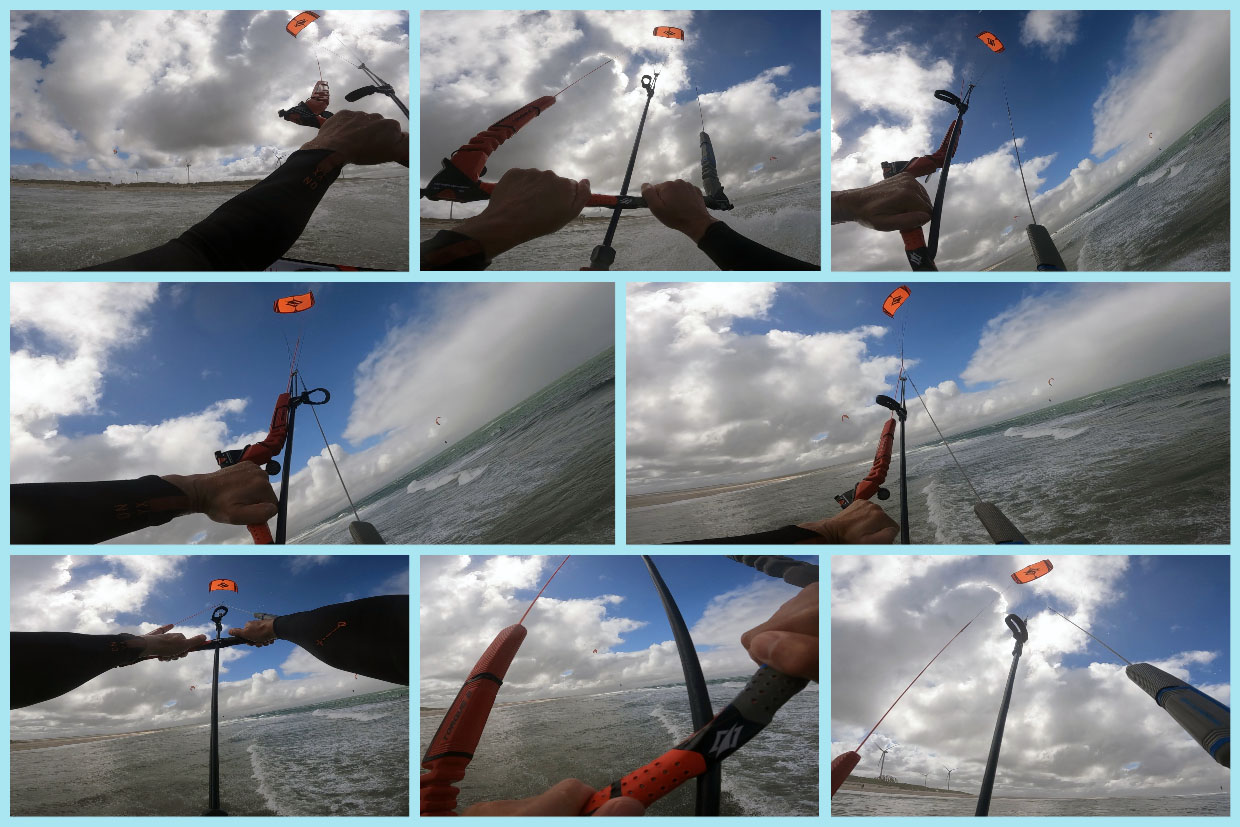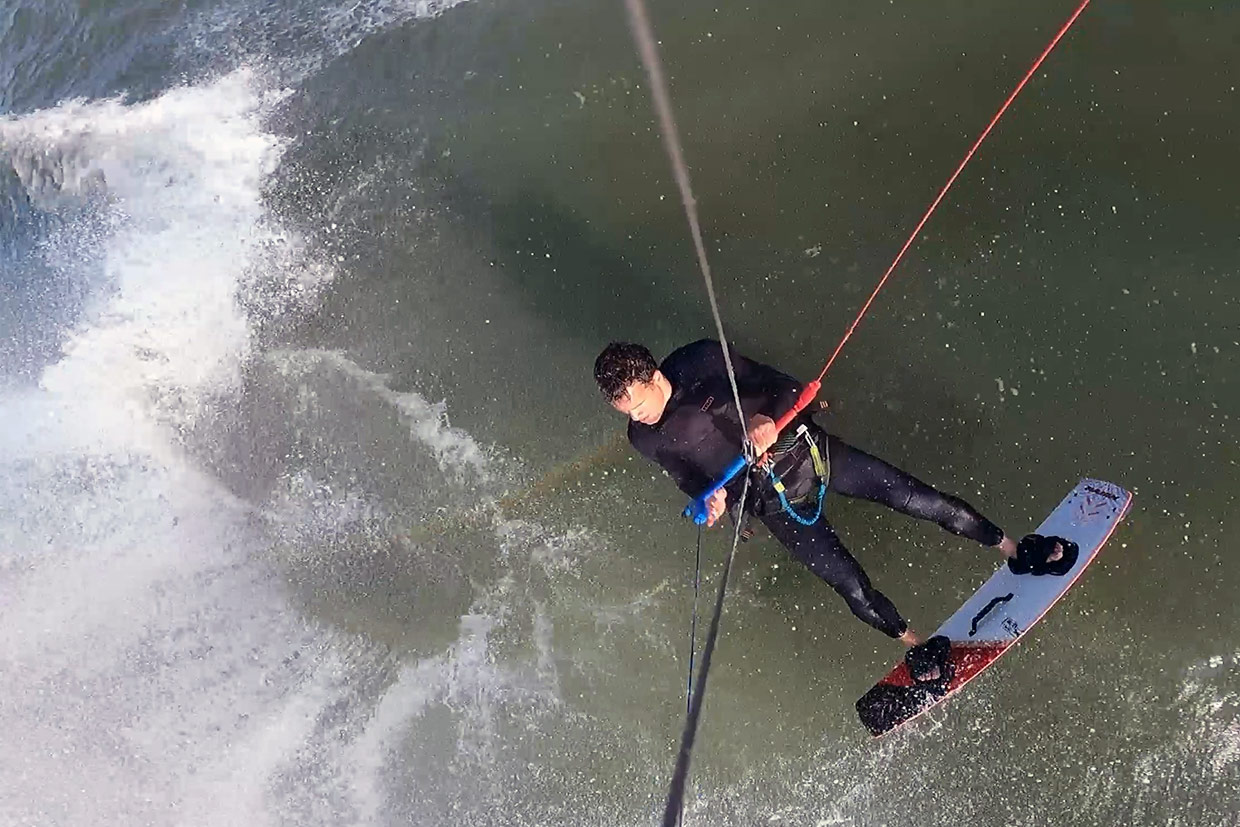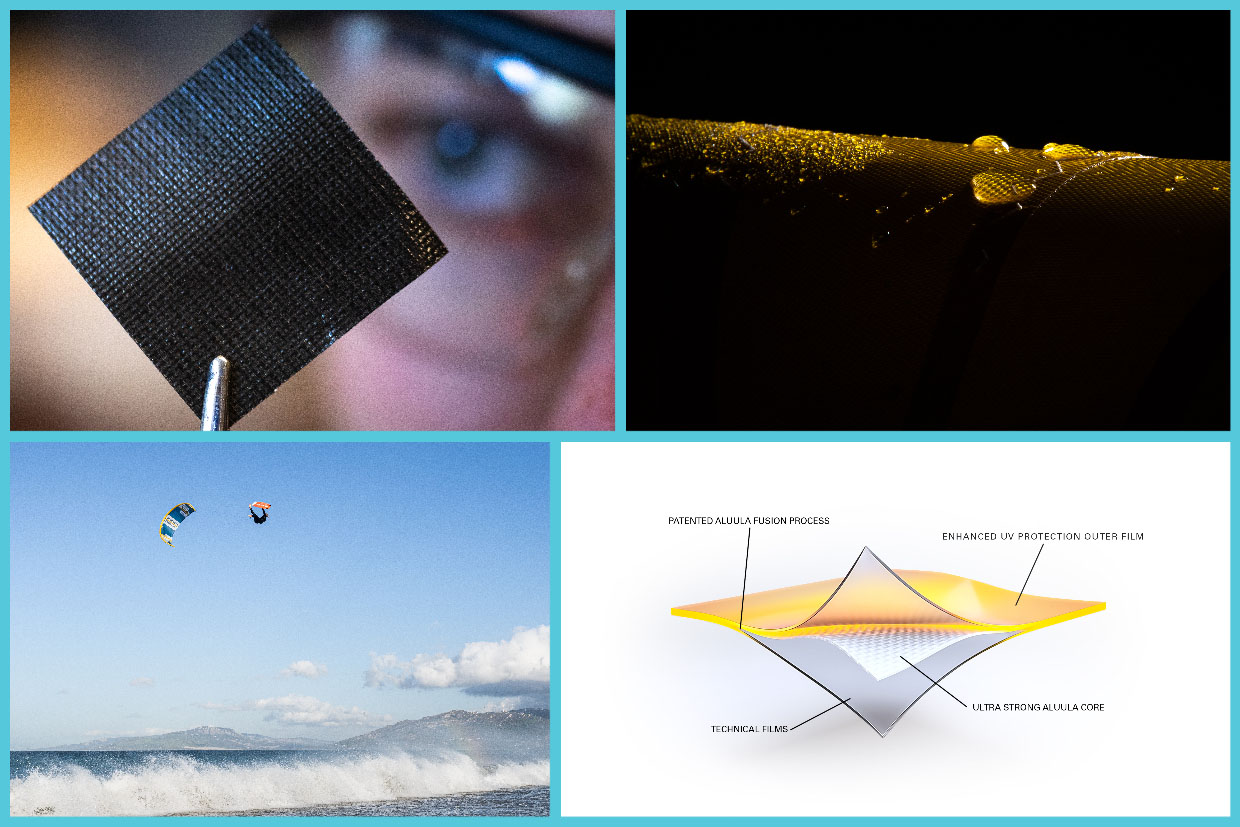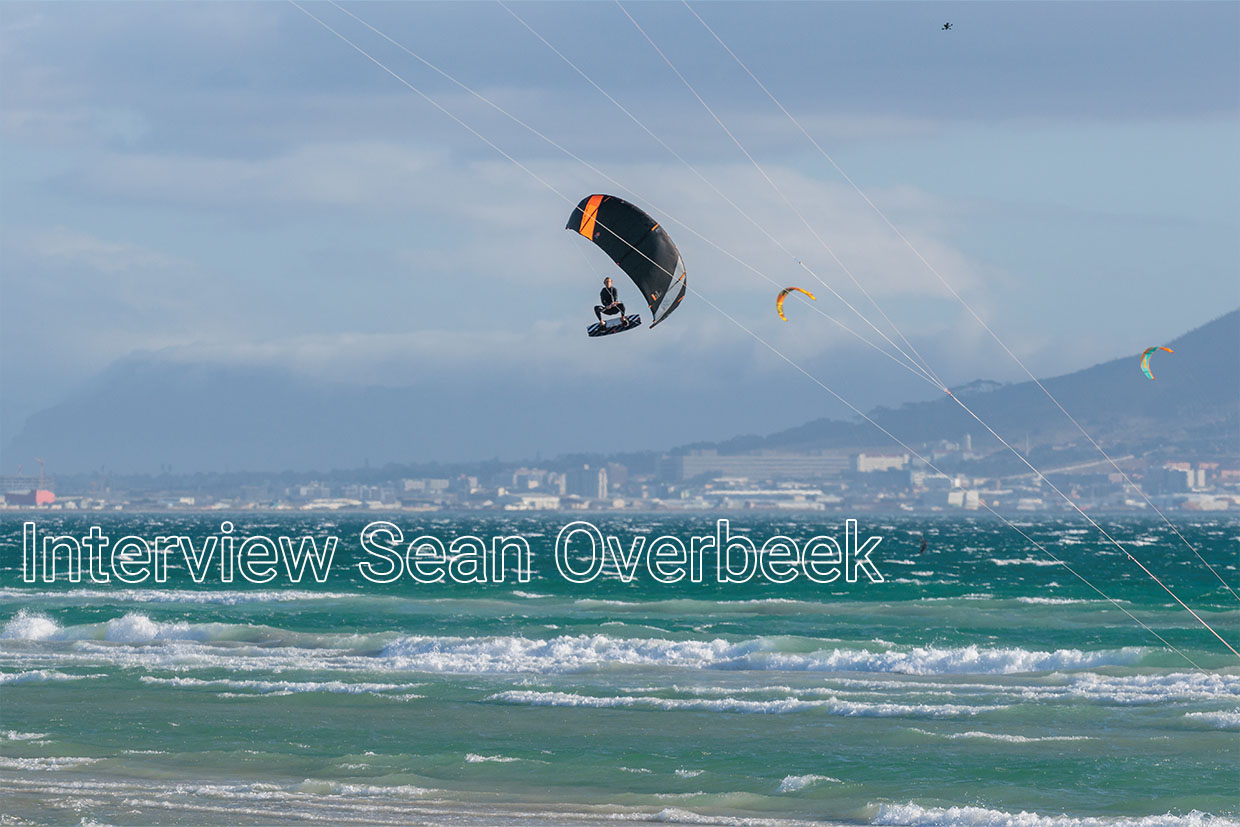The kiteloop is a coveted kitesurf trick for many kitesurfers where the kiter uses his kite circle in the air late make. You can make a kiteloop as extreme as you want. For example, you can do it kitesurfing very easily, so without jumping. But also when turningkiteloop transition) or during the landing of a jump (downloop). Then the barrel can help you quickly place your kite in the wind window again. Kiteloops and other kitesurfing tricks can be built up, expanded and performed a little more extreme each time until the mega run or even double kiteloop ready. Very extreme tricks that you don't just do without risk. In this kiteloop tutorial we explain step by step how you can learn a kiteloop in the most familiar way possible. The fact remains that the kiteloop is also an extreme trick and therefore not without the risk of injuries. By following the steps in this tutorial we are happy to help you learn a kiteloop.
Also ambitious and participating?
Of course you don't have to participate. Kitesurfing is a super diverse sport with something for everyone. Anyway, you know that we are still ambitious and kitesurfing tricks to practice. Focus works on mastering new kitesurfing tricks. Feel free to spend an entire session practicing a specific trick that you want to master. Or do this together with your kitesurfing buddies. Even nicer.
Kite loop tutorial
Step 1 – Kiteloop preparation
First of all, it is important to ensure that your kitesurfing equipment is 100% in order. Kiteloops and megaloops are the more extreme kitesurfing tricks. A lot of forces are released during such tricks and that places maximum demands on your equipment. Therefore, check the condition of your bar and lines, whether your foot straps are still attached and the overall condition of your kite and accessories.
Impact vest no unnecessary luxury
In addition, wearing an impact vest is not an unnecessary luxury. Crashing is part of learning a kiteloop and megaloop. An impact vest helps soften the blows to your torso and ribs. It really works so my advice is to use one. I wear one myself impact vest under my wetsuit but of course you can also just go over it.
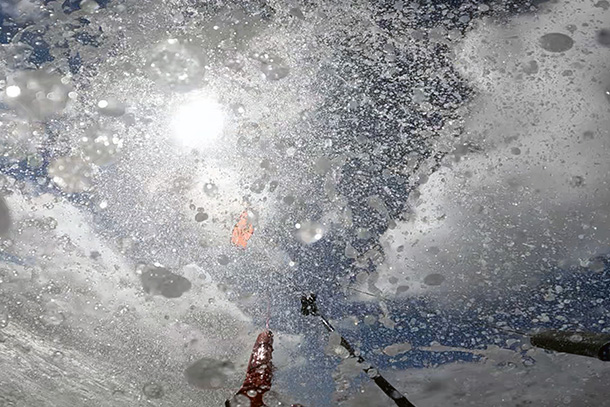
If you follow the steps in this kiteloop tutorial, the chances are highest that the times you fall you will make a slide landing. These are not the worst, but the water can put a lot of pressure on the body and ears.
Earplugs are also not a luxury
I am now a little more Catholic than the Pope because I don't always wear them myself. But you will crash and it would be a shame if your eardrum ruptures. Wearing earplugs can prevent this.
Step 2 – Gaining confidence in kiteloop
This step cost me the most time: the blockage that arose in my head to make the kiteloop. This one was created years ago after a number of hard crashes. Of course I made kiteloops afterwards, also in combination with transitions, but I didn't run them more than 10 in a row and not a megaloop at all. I would like to share what has worked for me in this kiteloop tutorial.
Tips for learning kiteloops – building confidence
- Provide a good foundation. You must be able to jump well, dare to jump high and, for example, be able to make a downloop. Everything where you send the kite around is experience and therefore trust. It also gets to know the turning circle of your kite.
- Choose a relatively fast kite. Depending on your weight, the sizes 8 and 9 meters in terms of kite are the best for learning kiteloop. Fast enough to practice in a fairly strong stable wind. The harder the wind, the gusty and therefore mind-controlled tricks go.
- Such a size kite in combination with 22 to 25 knots of wind is fine. Make sure the wind is stable. If there are gusts of more than 5 knots above the normal wind, it may not be your time to learn a kiteloop. You can then gain excellent experience with the steps below, but then it is for next time.
- An experienced kitesurfing buddy also helps a lot. Not all steps of a kiteloop are easy to put into words. You also have to get the feeling for it yourself. But many steps and tips can be given. In addition, someone who motivates and keeps an eye on you is also a big plus.
- Do it safe. So in the sight of others or together with a buddy. Provide side-onshore wind so that in the event of a crash you are always in sight of others and are blown back ashore.
Step 3 – Making good structural jumps
We start this kiteloop tutorial with making it structural and landing good and high jumps is an absolute must. You should be able to do this. This generally applies to learning a kiteloop, but also during the session in which you want to run the loop. So start during the session in which you are learning the kiteloop with normal high jumps.
You can make kiteloop jumps like this
3.1 – Time the outlet
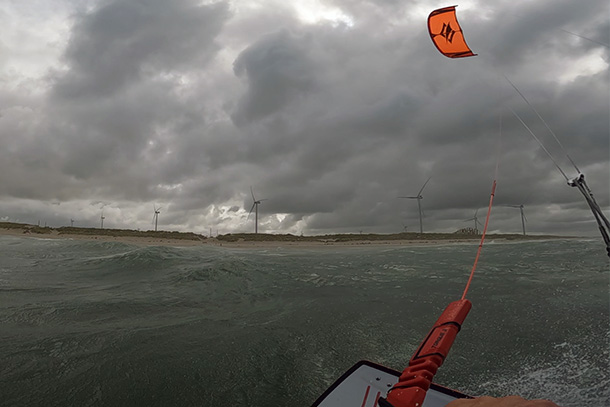
Choose a good piece of water for your drop off. Edge the kiteboard sharply so that you give maximum counter pressure to the kite.
3.2 – Sales as radical as possible
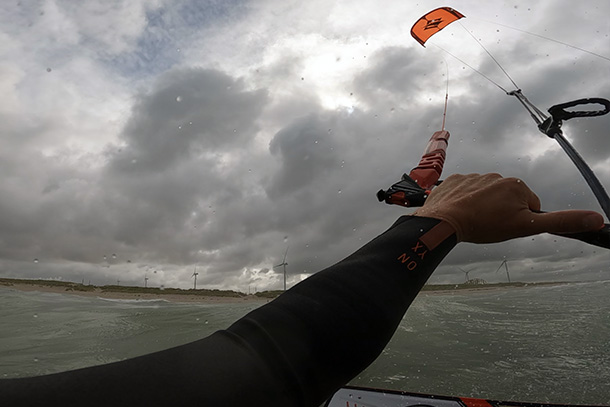
Send the kite in hard, in combination with pulling on the bar, keep angling the kiteboard until you are picked from the water.
3.3 – As straight up as possible

Even then, sit back with everything you've got. The aim is to jump into the air as straight as possible, not forward. Keep your kite pulling in the opposite direction and crawling up at 12 o'clock or just slightly.
Get a feeling at the moment of the kiteloop
Once in the air, think about the best timing for pulling the kiteloop. This is just before the highest point of the jump is reached. Once experienced this goes by feeling and you can change this, but for now this is your strategy to gain confidence.
Countries with a downloop
If this goes well, you can let the kite crawl over you depowered when landing and land in front of the wind in combination with a downloop. With the kiteloop you will land your kiteboard much more than usual with the wind instead of perpendicular to the wind. Practice with this in combination with the downloop.
Step 4 – Practice the timing of the loop without making the kiteloop
This is a nice step that already gives a kick in itself and can at some point give a boost in confidence. You jump again as in step 3.
4.1 – Moment of turning around
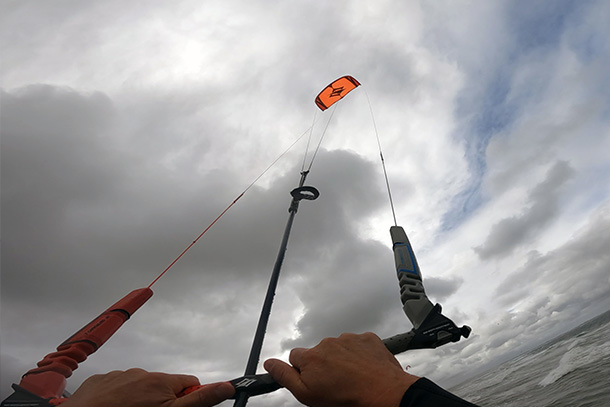
As stated, your timing for the kiteloop will be just before you reach the highest point of your jump and the kite is neatly above you at 12 o'clock or just beyond opposite to your heading.
4.2 – Pull as radical as possible
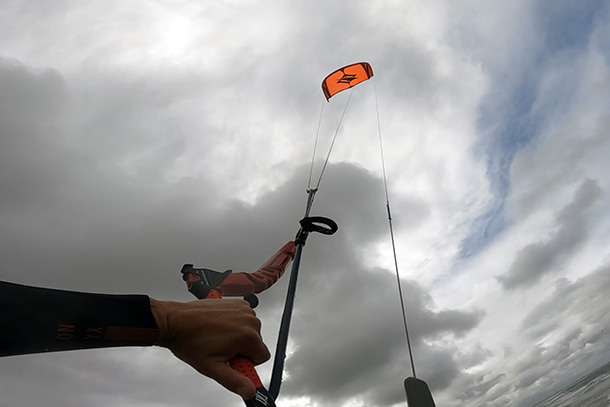
At that moment you radically pull your bar for a fraction of a second in the opposite direction of your sailing direction. The kite is now preparing for a kiteloop.
4.3 – And return it immediately
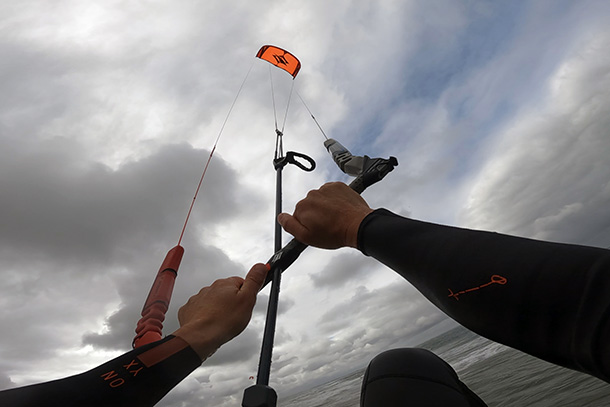
However, you do not continue but send directly back to 12 o'clock. Make sure you have mastered this process including landing with downloops.
10 times wearing of this movement
My experience is that if you practice this often enough in a row, you are completely ready for your first kiteloop. Feel free to do it until you get a little tired of it. For example about 10 times. Getting tired of it means it's becoming an ingrained skill. You have to have that, because it gives you confidence for the next step.
Step 5 – Learn kiteloop: keep spinning
Now you go for it. I feel for you because maybe it's just as exciting for you as it was for me. That is precisely why this extensive kiteloop tutorial. After visualizing 100 times, watching dozens of videos, going home again and again without having made a kiteloop and encouragement from the mates, it is now your turn. You couldn't be better prepared with the preparations above. Even if it remains an extreme kitesurfing trick. So a crash on landing and a drink of water is part of it every now and then.
One more time the process to the kiteloop
- You kitesurf and are 100% committed to making a kiteloop. Once you send the kite around, you cannot abort the kiteloop. But you have built up confidence with the aforementioned steps and are now pushing yourself to really go for it.
- You check the area to see if there is enough space and if you have sufficient distance from other kite surfers.
- Your hands slightly off the center of the bar so that you can steer as much as possible in the air. Yes, we start with a neat kiteloop and that's why we send in as radically as possible.
- Timing your jump. Find a nice piece of water to take off your jump. Not in sparkling water because you already lose pressure in it and this is exactly what you need.
- Edge as hard and long as you can at the take-off of the jump so that you go up into the air as upright as possible: like a pile straight up.
- Kite not too far off center. Everything is now as you actually trained and what even got bored. So completely familiar. On a roll! If not, you don't go to the kiteloop. Decision-making now happens in a split second. Almost too fast to think rationally.
The kiteloop itself – kiteloop tutorial
- Send in radically and persevere. Here we go. After point 6 as described above, the time has come. Just before you reach the highest point of your jump, you send the kite in abnormally radically. You hold this position until the kite has turned around. If you do not send in radically enough, the barrel will become larger and the kite will come lower. That's possible, but we don't want to have that in the process of learning. If it does happen, don't panic but continue your run and steer more radically than before. During the kiteloop you cannot and do not want to go back. Breaking the barrel would cause a hard crash. Much harder than continuing your run and having to do a slide crash.
- Degree of depowering. You can keep the degree of depowering the same during the kiteloop as during the process of the jump and the rise in the air. This way you can be sure that your kite has enough forward speed during the run. As soon as the kite has turned around, this changes radically.
- Depower kite maximally after the run. After the kite has turned around and rises again to 12, let it rise as quickly as possible by giving it all the depower that is possible. This way the kite rises quickly and preferably over you. It's like sitting on the swing and swinging yourself forward while the swing is attached behind you. You don't see me doing this enough in the videos, but it's not necessary per se. You can also land the kiteloop without a heliloop.
5.1 – Send in radically

Just before you reach the highest point of your jump, you send the kite in abnormally radically. You hold this position until the kite has turned around.
5.2 – Point of no return
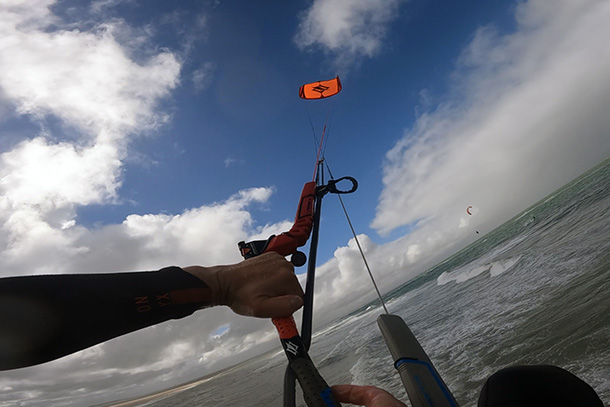
During the kiteloop you cannot and do not want to go back. Breaking the barrel would cause a hard crash. Much harder than continuing your run and having to do a slide crash.
5.3 – Maximum depower
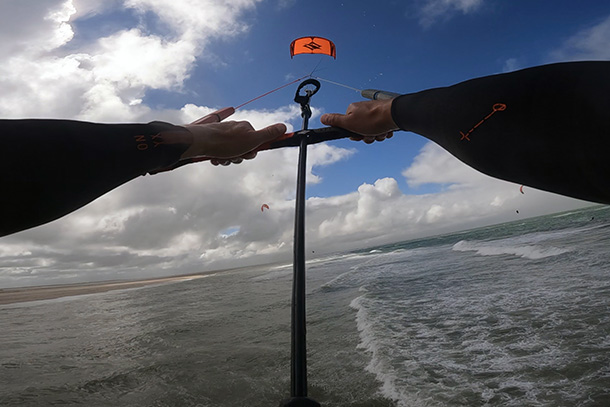
After the kite has turned around and rises again to 12, let it rise as quickly as possible by giving it all the depower that is possible. This way the kite rises quickly and preferably over you.
Step 6 – Kiteloop with or without heliloop
Just before landing, tighten the bar again. Really hard! If you don't want to do a heliloop, pull the bar hard and steer the kite in the direction of travel to continue your course. If you do want to make a heliloop, send in harder and longer so that the kite makes another rotation, but now in the other direction. With the kiteloop included, this looks like a kind of 8.
Step 7 – Landing downwind
Simultaneously with the moment of putting on the bar and steering the kite, let yourself be pulled forward so that your kiteboard actually points with the wind direction. You do not land a kiteloop perpendicular to the wind, but with the wind. This can still go fast and that is why you can easily unwind your kiteboard on the water. For the wind, let the rear make contact with the water first and then land the board all the way to get the speed out and then cross again.
In particular, the feeling of depowering and then pulling up the bar again and landing in front of the wind is indescribable. It is a certain feeling and balance of the body in relation to the kite and all forces. You have to experience it. When you have developed the feeling for it, you can repeat this and the kiteloop becomes a lot easier.
Learning kiteloop conclusion
Once you've landed the first kiteloop, you've done the trick. Congratulations! According to the gurus, for example Bram Sanstra, it is then a matter of doing it very often and constantly developing something. But I sometimes hear from the same gurus that even at 35+ knots they feel the tension again for the first megaloop of the session, as I also experienced when learning the kiteloop. Hopefully this kiteloop tutorial will help you. Tips from the gurus are also welcome.


